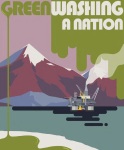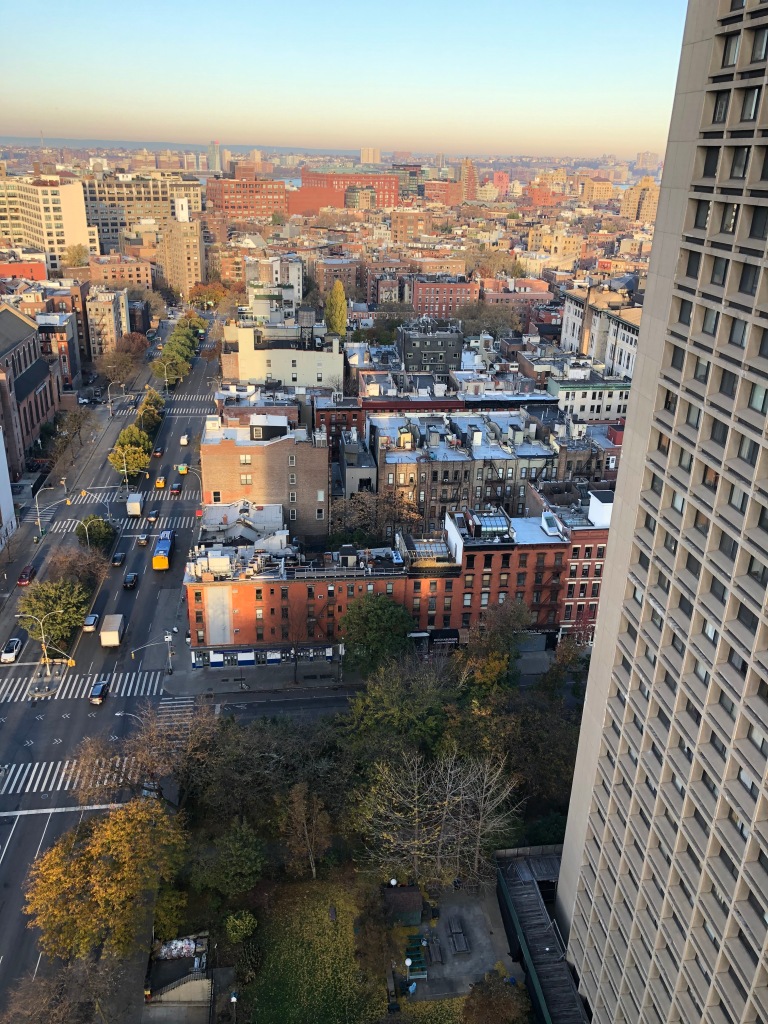Commemorating COVID

A worldwide event as consequential as the COVID-19 pandemic deserves to have a memorial. How can compassionate architects and designers confront our understanding of memorial design in the aftermath of the COVID-19 pandemic?
“Commemorating COVID,” with Mitchell Joachim and Paul D. Miller, in The Pandemic Effect, Braine Brownell (ed.), (Princeton: Princeton Architectural Press, 2023), 44-45.
The Cooper Union Promotes Russian Architecture. Why?
The School of Architecture at Cooper Union promotes Soviet architecture in the midst of the Ukrainian Village in Manhattan. I argue that they should stop doing so, and instead support the war-torn nation. My opinions are in bold.
Statements by Ukrainians on Cooper Union’s Facebook page here (1/18/23).
Read my first op-ed here (1/21/23) and the version edited by Archinect here (1/25/23).
Read Cooper Union’s statements here (1/12/23), here (1/25/23), here (2/6/23) here (2/6/23), here (2/7/23), here (4/17/24) and here (4/17/23).
The reaction from Architect’s Newspaper here (1/26/23), here (2/2/23), and here (4/17/23).
The reaction from Archinect here (1/26/23) and here (2/7/23)
The reaction from ARTnews here (1/30/23) and here (2/7/23).
The reaction from Hyperallergic here (1/31/23).
The reaction from Dezeen here (2/2/23) and here (2/7/23).
Open letter in support of the Vkhutemas exhibition in Art and Education here (2/1/23).
Statement from PEN America here (2/2/23).
The reaction from Curbed here (2/6/23).
The reaction from Artforum here (2/6/23)
The reaction from The Art Newspaper here (2/6/23).
The reaction from New York Times here (2/7/23).
The reaction from Voice of America (in Russian) here (2/8/23).
The reaction from The Eastern Herald (India) here (2/8/23).
Read my answer to criticisms in an op-ed in Kyiv Post (Ukraine) here (2/8/23).
The reaction from Klassekampen (Norway) here or [PDF] (2/10/23) here (2/14/23), here (2/18/23), with my reply here and as PDF (2/24/23).
The reaction from Document (Norway) here (2/13/23).
Archiagape

Perhaps the architecture profession needs a new name? How about replacing “architecture” with “archiagape”? This is the lecture I gave at the Venice Biennale of Architecture in May 2021. Published as “Archiagape” in Ambiguous Territory: Architecture, Landscape and the Postnatural, Chris Perry (et.al.) (eds.), (Barcelona: Actar, 2022), 298-302. [PDF]
My review of Mapping Water in Dominica

Mark W. Hauser, Mapping Water in Dominica: Enslavement and Environment under Colonialism, (Seattle: University of Washington Press, 2021).
Livet er best ute

Livet er best ute: Friluftslivets historie og filosofi, (Oslo: Kagge Forlag, 2022)
Livet er best ute. Eller er det egentlig det, spør Peder Anker i denne boken om friluftslivets historie og filosofi. Med friluftslivet som et utgangspunkt forteller Anker om våre uartikulerte verdier og tradisjoner, slik de ser ut fra fjellet, skogen og svaberget. For lengselen etter friluftslivet er det vi har felles, mener han.
Denne boken har han skrevet for alle de som synes livet er best ute. Leseren trenger ikke noen andre egenskaper for å bli med på å utforske hva friluftslivet er for noe. Anker tar leseren med på en personlig vandring igjennom friluftslivets historie, kultur og filosofi. Det er en tur i et mykt lettgått terreng, med en og annen utfordrende skrent. For det må til for å nå fjellets topp. Der får leseren hvile sine tanker ved varme kilder. Selv om turen er rimelig enkel, så er den på ingen måte ufarlig. Det er mektige motkrefter som undergraver friluftslivet, påpeker Anker, både i oss selv og i samfunnet rundt oss. Friluftslivet er truet. Denne boken søker derfor å fornye og utfordre, med vekt på naturvern.
Kjøp boken i din lokale bokhandel, på Norli, Akademika, Ark bokhandel, eller rett fra Kagge Forlag.
Bla i boka
Les de første 30 sidene gratis her.
Omtale
Runar Larsen, “Jul med din leseglede,” VG: Magainset Reiselyst, 9 desember, 2022.
Emil L. Mohr, “Tilbake til naturen,” Dagens Næringsliv, 22 oktober 2022. [PDF side 1-2, PDF side 3]
Vemund Sveen Finstad, “Et spørsmål om vern”, Aftenposten: Historie, 8 sept. 2022.
Maria Birkeland Olerud, “Drømmen om Kristi gjenoppstandelse ble hetende bærekraftig utvikling,” Vårt land, 28 juli, 2022. [PDF]
Anmeldelser
Marte Ostmoe, “Hva er egentlig et friluftsliv?” Padling, 4 november 2023. [PDF]
Anders Horntvedt, “Selfies, fjellyoga og profittjagende hyener,” Finansavisen, 3 februar, 2023. [PDF]
Rolf Kjøde, “Friluftsromantikk mot fritidskapitalisme,” For Bibel og Bekjennelse, 6 september, 2022.
Tom Hetland, “Norsk friluftsglede sett frå New York,” Stavanger Aftenblad, 21 august, 2022. [PDF]
Espen Søbye, “Er nå livet egentlig best ute?” Morgenbladet, 5 august, 2022. [PDF]
Podkast
“Friluftslivets historie” Historier som endred Norge, 3 april, 2023, med Christian Gilsvik.
“Den norske miljødebatten” Historier som endred Norge, 20 mars, 2023, med Christian Gilsvik.
“Livet er best ute” Ideer, Tankesmien Agenda, 17 februar, 2023, med Hilde Nagel.
“Friluftslivets filosofi og motstraums reiselyst” Litteraturhuset i Bergen, 23 august, 2022, med Gunnar Garfors og moderert av Margunn Vikingstad.
Utdrag
“Hold kjeft stedet,” Vagabond reiselyst, 10 (2022), 51. [PDF].
“Jeg har revet varder. Mange av dem,” Harvest magazin, 16 juli 2022. [PDF]
Bokbad og presentasjoner
Bokbad, Amundsen Sport, New York, Nov. 2 2023
Bokbad, Porsgrunn bibliokte, Porsgrunn, Aug. 29, 2023.
Bokbad, Norsk Sjømannskirke, New York, Dec. 7 2022.
Bokbad, Norsk skogmuseum, Elverum, Nov. 24 2022.
Bokbad, Akademika bokhandel, Bø i Telemark, Nov. 23 2022.
Institutt for friluftsliv, idrett og kroppsøving, Universitetet i sørøst Norge, Bø i Telemark, Nov. 23 2022.
Østfoldmuseene, Halden, Nov. 7. 2022.
Boklansering, Oslo, 17 august, 2022.
TV
“Klimakrisen” TV2 Nyheter, 6, 8 og 9. april, 2023.
NRK Kveldsnytt, 15 august, 2022.
NRK Nyhetsmorgen, 8 august, 2022.
Radio
NRK Hordaland, 23 august, 2022.
NRK P2-Pulsen, 21 juli, 2022.
Ukichiro Nakaya’s Sense of Snow

“Ukichiro Nakaya’s Sense of Snow” with Sverker Sörlin, in Letters Sent from Heaven: Frozen and Vaporized Water: Ukichiro Nakaya and Fujiko Nakaya’s Science and Art, Jonatan Habib Engqvist and Marianne Hultman (eds.), (Oslo: OK Book, 2022), 125-131. [PDF].
Greenwashing a Nation

Norwegians like to think of Norway as being an alternative environmentally sound nation compared with the rest of the world. They fashion themselves and their country as a microcosm for a better macrocosm. The reality is that this greenwashing of a nation is powered by the money from the oil, and that my native Norway has little to be proud about.
Time Landscape

“Time Landscape,” in Expansions: How Will We Live Together? Hashim Sarkis and Ala Tannir (eds.), (Venice: 17th International Architecture Exhibition – La Biennale di Venezia, 2021), 176-178. [PDF]
Cycles and circulation: a theme in the history of biology and medicine
“Cycles and circulation: a theme in the history of biology and medicine,”History and Philosophy of the Life Sciences 43:89 (2021), 1-39. [PDF]
Nick Hopwood, Staffan Müller‑Wille, Janet Browne, Christiane Groeben, Shigehisa Kuriyama, Maaike van der Lugt, Guido Giglioni, Lynn K. Nyhart, Hans‑Jörg Rheinberger, Ariane Dröscher, Warwick Anderson, Peder Anker, Mathias Grote, Lucy van de Wiel, The Fifteenth Ischia Summer School on the History of the Life Sciences
Abstract
We invite systematic consideration of the metaphors of cycles and circulation as a long-term theme in the history of the life and environmental sciences and medicine. Ubiquitous in ancient religious and philosophical traditions, especially in representing the seasons and the motions of celestial bodies, circlesonce symbolized perfection. Over the centuries cyclic images in western medicine, natural philosophy, natural history and eventually biology gained independence from cosmology and theology and came to depend less on strictly circular forms. As potent ‘canonical icons’, cycles also interacted with representations of linear and irreversible change, including arrows, arcs, scales, series and trees, as in theories of the Earth and of evolution. In modern times life cycles and reproductive cycles have often been held to characterize life, in some cases especially female life, while human efforts selectively to foster and disrupt these cycles have harnessed their productivity in medicine and agriculture. But strong cyclic metaphors have continued to link physiology and climatology, medicine and economics, and biology and manufacturing, notably through the relations between land, food and population. From the grand nineteenth-century transformations of matter to systems ecology, the circulation of molecules through organic and inorganic compartments has posed the problem of maintaining identity in the face of flux and highlights the seductive ability of cyclic schemes to imply closure where no original state was in fact restored. More concerted attention to cycles and circulation will enrich analyses of the power of metaphors to naturalize understandings of life and their shaping by practical interests and political imaginations.
Greenhouse Book Talk: The Power of the Periphery
Environmental Humanities Book Talk: The Power of the Periphery, The Greenhouse, University of Stavanger, Nov. 2, 2020.